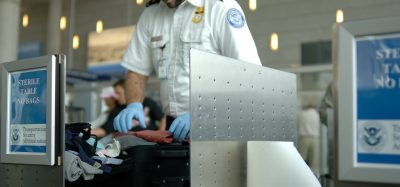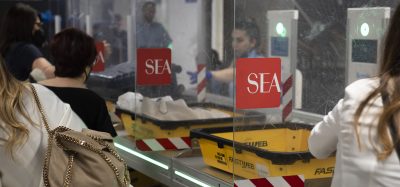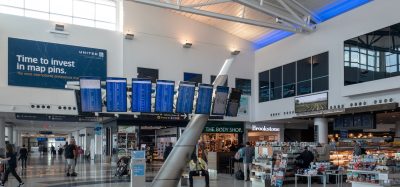The next step in aviation security
- Like
- Digg
- Del
- Tumblr
- VKontakte
- Buffer
- Love This
- Odnoklassniki
- Meneame
- Blogger
- Amazon
- Yahoo Mail
- Gmail
- AOL
- Newsvine
- HackerNews
- Evernote
- MySpace
- Mail.ru
- Viadeo
- Line
- Comments
- Yummly
- SMS
- Viber
- Telegram
- Subscribe
- Skype
- Facebook Messenger
- Kakao
- LiveJournal
- Yammer
- Edgar
- Fintel
- Mix
- Instapaper
- Copy Link
Posted: 11 September 2006 | Rob. L. Townsend, SOC Analyst, San Francisco International Airport | No comments yet
To counter an ever present, ever shifting threat, aviation security must be a constant work in progress. At San Francisco International Airport, that progress has recently leapt forward.
To counter an ever present, ever shifting threat, aviation security must be a constant work in progress. At San Francisco International Airport, that progress has recently leapt forward.
In August 2005, San Francisco International Airport launched a new Security Operations Center (SOC). With an initial staff of four security analysts, the SOC was established to monitor the Airport through its extensive CCTV network, collect and analyse security-related data and trends, and identify potential threats and vulnerabilities. Co-located with the Airport’s 911 Communications Center, the SOC conducts valuable proactive surveillance, while supporting Communications dispatchers by analysing and relaying essential information regarding specific incidents. The opening of the SOC represented a bold step forward for SFO by bringing together multiple types of security-related data, but it was a natural one for the Airport because of its unparalleled commitment in providing its passengers, tenants and employees with an unsurpassed level of safety and security.
In December 2001, the Airport opened its spacious 24-gate international terminal – the largest by floorspace in North America – as well as a light rail passenger transport system known as “Air Train,” a consolidated rental car centre, and two new air cargo buildings, all part of $2.5 billion Airport Master Plan. The severe economic consequences following the terrorist attacks of September 11, 2001 brought unexpected operational and financial challenges as traffic dropped from a record high of 41 million passengers in 2000 to just 28 million the following year.
Working closely with tenants and airlines, Airport Director John L. Martin stabilised Airport finances and re-focused SFO on a “smart growth” philosophy, targeting primarily new long-haul domestic and international routes. Martin’s vision has paid off handsomely for SFO with the decision by Virgin America to base its future operations at SFO and the rebounding of international passenger traffic back to pre-2001 levels. The Airport is also poised for further growth as one of the few airports in North America currently ready for the new super jumbo jet, the A-380, and, with the installation of a pioneering advanced radar system and flight approach procedure, the Airport can now accommodate more flights per hour in inclement weather.
SFO has always strived to be on the cutting edge of security technology; the SOC is the next step. In 1991, SFO took the unprecedented step of installing biometric hand readers at airfield access doors. In 2000, in conjunction with the opening of the new International Terminal, SFO became the first airport in the world to utilise an inline baggage Explosive Detection System (EDS) with a centralised On-Screen Resolution Center for processing. In the same year, the Airport opened a state-of-the art Emergency Operations Center as a centralised incident command post, supplementing the combined police, fire, and medical Communications Dispatch Center that it has possessed for many years.
Since 2001, over $150 million of federal and Airport funds have been spent on additional security enhancements. The inline EDS has been extended to all terminals, making SFO one of the first US airports with 100% inline operations and simultaneously improving security, as well as customer convenience. Perimeter fencing has also been upgraded along the entire landside perimeter and a new Water Perimeter Security Zone has been established.
SFO designed and built a one-of-a-kind Mobile Screening Vehicle with Explosive Trace Detection equipment for emergency use at remote locations, as well as a Mobile Decontamination Vehicle capable of decontaminating hundreds of people per hour who may have been exposed to a variety of chemical and biological agents. This past spring, SFO was selected by the Department of Homeland Security (DHS) as one of three airports in the nation to be part of a pilot cargo screening project, which will evaluate the use of baggage screening equipment to screen air cargo for explosives. Partnering with the DHS Office of Science and Technology, the Transportation Security Administration (TSA), Lawrence Livermore National Lab, Oakridge National Lab and several airlines, SFO will assist in determining future standards for air cargo Explosive Detection Systems.
SFO was also one of the first airports in the U.S. to install passenger checkpoint Explosive Trace Portals and it has worked with a private vendor to build a prototype “Checkpoint of the Future,” showcasing next-generation technologies. Partnering with the TSA and its security screening contractor, SFO has some of the shortest passenger screening wait times in the nation. This unique relationship between the airport operator, the federal government and a private contractor has resulted in not only an exceptionally advanced security programme, but also highly-satisfied passengers and airlines.
The overriding goal to be proactive versus reactive was the main philosophy behind the creation of the Security Operations Center. The centrepiece of a $9 million federally-funded, multi-phase security project, the SOC was developed in three basic phases. Phase One saw the design and construction of the SOC facility, completed in July of 2005 and functioning since August of that year. The SOC’s dual workstations include legacy security systems: the CCTV network, Computer Aided Dispatch (CAD), the Access Control System, two limited-scope digital video recording systems and a pilot-programme video analytics station. With these tools, the SOC continuously monitors all sections of the Airport, adding a dynamic new layer to the Airport’s security defenses.
The SOC relies heavily on the CCTV camera network, accessed through two dedicated keyboards and displayed on a video wall of seven large-screen monitors. The 1500-plus fixed and pan-tilt-zoom (PTZ) cameras overlook public and secured areas, all access doors and gates, and all roadways and garages. A video callup screen automatically displays live footage of any security devices currently in alarm.
The CAD terminal functions as the SOC’s critical link to the Communications Center dispatchers, as well as displaying all feedback from emergency response units. The Access Control System allows the SOC to monitor the movements of persons into and out of the Airport’s sensitive security areas. Each workstation’s two standalone Networked Digital Video Recording Systems (NDVS) record selected CCTV cameras plus the seven wall monitors, with the balance of the cameras recorded on VHS tape.
An Intelligent Video Analysis System (IVAS) aids in detecting unattended vehicles and behavior anomalies at sensitive security area portals. The IVAS was installed at SFO in 2004 as a TSA-funded pilot project to help develop software algorithms for security applications. The SOC has become an instrumental partner in this project, providing practical, end-user feedback; the IVAS has progressed to the point that it now plays a crucial role in the SOC’s surveillance and analysis work.
Phases Two and Three are currently under way. The Airport will soon acquire a large-scale NDVS, providing instant access to recorded video from every Airport camera. The Access Control System will soon be updated to allow for greater interoperability with other systems and, most important of all, each operator’s workstation of various standalone terminals will be integrated into a single user interface.
Future project phases will extend the use of IVAS throughout the Airport, increase camera coverage and add intrusion detection enhancements to the shoreline perimeter. Each of these steps will further boost SOC capabilities.
The Security Operations Center’s first year in service has proven to be an extended “shakedown cruise,” which will continue until the new NDVS has been installed and the systems integration is completed. Because the SOC was not created to fill an existing hole but rather to augment an already outstanding security environment, it has been allowed to progress at an ideal pace, discovering and refining the tasks to which it is best-suited.
The SOC has excelled in utilising the CCTV network to spot and track suspicious behavior. Working with Communications dispatchers, the SOC provides timely, critical information to Airport response agencies, empowering them to head off impending security incidents and deal more decisively with those in progress. Quickly becoming SFO’s expert on remote observation and incident footage retrieval, the SOC has vastly extended the Airport’s camera usage and validates past and future investments in CCTV.
The SOC also conducts ongoing analyses into the many automated alarms each day that require emergency response. By studying the trends of employee or passenger actions that may have activated them, the SOC can generate regular alarm reports to spotlight the most-active sensors and help to focus Airport attention on potential problem areas. Effective solutions including improved signage, SOC-facilitated employee outreach efforts, procedural enforcement and better-directed responses to malfunctioning sensors have reduced the number of “false-positive” alarms by over a third. As emergency personnel are freed from the burden of responding to spurious alarms, more resources are directed toward proactive patrolling, thereby significantly improving the overall level of Airport security. An additional and important by-product of this approach has seen first-responder confidence in alarm validity increased, leading to more efficient alarm resolution.
The SOC’s capabilities will continue to advance with the technology. The upcoming workspace software integration will streamline the security analysts’ workflow by reducing the time for tasks that now require minutes to just a few mouse clicks. IVAS will be introduced to new areas of the Airport and automate many basic surveillance responsibilities. The SOC’s effective tenant outreach and education efforts – perhaps the most unexpected facet of its work thus far – will be continued to be enhanced and expanded. With a successful opening year behind it and the promise of better to come, the SOC is quickly maturing into one of the integral pillars of San Francisco International Airport’s Security Program.
There is no “finish line” in aviation security; it’s a constant work in progress. A safe, worry-free environment for the flying public requires consistent, unflagging and innovative commitment and effort. This is the kind of effort that has flourished at SFO, producing bold advances like the Security Operations Center. With a continually-renewed dedication to safety, security, and customer service, San Francisco International’s place remains assured: an international airport that provides not only world-class customer service but unsurpassed safety and security.
Rob. L. Townsend
Rob. L. Townsend is a Security Operations Center (SOC) Analyst at San Francisco International Airport. Prior to joining SFO, his experience included working for Covenant Aviation Security, LLC, the contract screening service for SFO. The remainder of the SOC team come from a diverse set of aviation and security-related backgrounds, shaping the new unit into a key component of SFO’s Security Program.
















